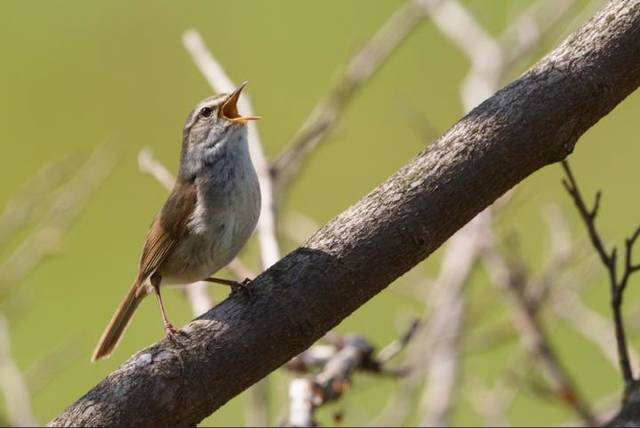Bush warblers provide insight to evolution

COURTESY S. PRICE
A recent study, conducted by a team led by Northern Arizona University researcher Jeffrey Foster, examined blood and muscle samples from 147 bush-warblers living on five islands between 2003 and 2005.
A recent study of Japanese bush-warblers, which were introduced to Oahu in 1929 and are now present on each of the main Hawaiian islands, is providing new insight into the evolution of non-native bird species in the state.
The study, conducted by a team led by Northern Arizona University researcher Jeffrey Foster, examined blood and muscle samples from 147 bush-warblers living on five islands between 2003 and 2005.
As expected, samples collected from birds on Oahu had higher genetic diversity than those from other islands, where populations were established from a smaller pool of birds.
Kauai’s bush-warblers, however, appear to be an outlier.
The researchers note that Kauai, which is three times farther from Oahu than the closest other islands, boasts a population of bush-warblers that appear to have a “unique subset of the overall genetic diversity found elsewhere.”
Foster said the difference suggests that bird populations on the different islands will continue to diverge over time.
Don't miss out on what's happening!
Stay in touch with breaking news, as it happens, conveniently in your email inbox. It's FREE!
Foster said the invasive bush-warblers provided a useful subject through which to examine bird evolution.
“Bush-Warblers first arrived on the Big Island when I was living there in the 1990s,” said Foster, in a release distributed on Jan. 17. “The idea that one could study this invasion in progress totally blew my mind.”
Foster said it is still unknown the degree to which the birds are flying between islands, which would potentially complicate the effort to distinguish differences in genetic “signals.”
He said it is also yet to be determined why it took the birds some 50 years to travel from Oahu to the other islands.
Results of the study are included in the January 17 edition of the scientific journal The Auk Ornithological Advances, viewable here: http://808ne.ws/2mZ67ai Opens in a new tab.



